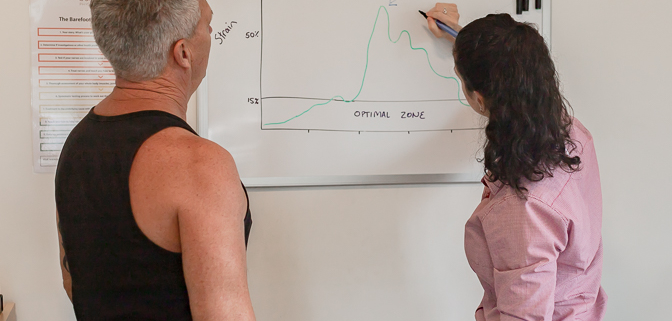Neuroplasticity in chronic pain
Written by: Catherine Mullins
Chronic pain is defined as the presence of painful sensations that have lasted for more than 3 months and persist without the presence of physical tissue damage or pathology. Up to 20% of the population experience chronic pain at any one time.
What happens in the brain with chronic pain?
Part of the transition from acute to chronic pain involves neuroplastic changes in the central nervous system (brain and spinal cord) (see previous blog on Neuroplasticity for more info on sensitisation) and maladaptive (not useful) changes in body perception and awareness. This can physically result in a measurable change to the thickness of your brain’s grey matter (where majority of neural connections are found).
Two mechanisms that can occur in chronic pain involve the homunculus. The homunculus is the representative map of our bodies (both sensory and motor) within our brains. Each body part is given representation based on how many nerves are in the area and how much information is received/given. This representation map is (mostly) the same across all people. In people with persistent pain (therefore persistent activation and input), the body area in question can become bigger in this body map, which means even more awareness of this area and an increased perception of pain. People with chronic pain tend to move less, move more slowly, and reduce the variety of movements. This lack of input can lead to brain smudging in the homunculus and ultimately a reduced awareness around this body part.
Can we improve?
This can be changed again! Ultimately, we want to gradually introduce more variability to movement and postures, helping to remap the brain. Sometimes we need to start with simply imagining ourselves performing an activity without pain (stimulating mirror neurons). Other times we can gradually return to activity, changing the load, duration and context to allow for pain free (or reduced) function. We frequently utilise motor control exercises to help bring your awareness to an area and change patterning of muscle activation. Non-specific exercise of moderate intensity has been found to release BDNF (brain-derived neurotropic factor) and IGF (insulin-like growth factor), both of which help support neuroplastic growth.
If you’re experiencing chronic pain and want to know more – get in touch …. we love helping our community. You can book online here








Leave a Reply
Want to join the discussion?Feel free to contribute!